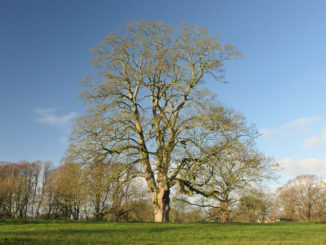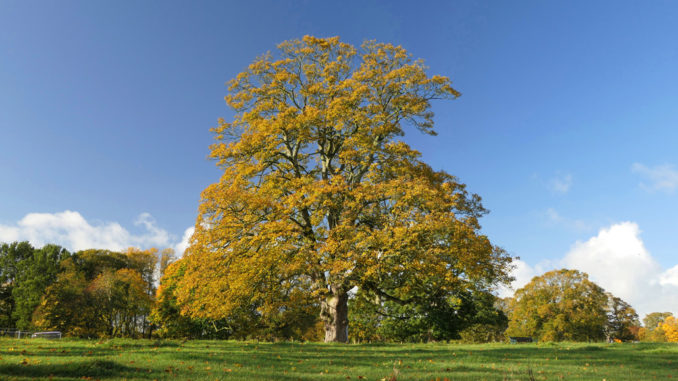
© DMG 2020
In this series of articles, I’d like to meander through the roots of some ancient customs, beliefs and rituals that have shaped our culture. Many are still followed, though sad to say, a growing number of folk have forgotten their origins and relevance.
Different groups celebrated different times of the year for a variety of reasons, mainly with the aim of marking harvests, the new year, rebirth, and so on. Many of these celebrations were very similar, and overlapped between neighbouring cultures. They were organised in the 1950s by Ross Nicholls and Gerard Gardner and presented as the ‘Wheel of the Year’, and while this modern re-branding might cause some to view it as modern fake nonsense, the concept of nature being cyclical is ancient. Life, death and rebirth have always been universal themes. All these sabbats were celebrated in the ancient world, just not necessarily all of them, by every tribe.
In a time when the idea of remembering your own birthday wasn’t even remotely ‘a thing’, these regular festivals provided communities with medium-term occasions to look forward to and plan accordingly for. A sense of structure is necessary in all our lives, and the annual routine of preparing for fresh planting, then harvest, and then battening down the hatches to survive winter were key to ancient lives. I sometimes mourn the fact that we have become too detached from these rhythms. We have lost the joy of a particular fruit being ‘in season’ for a brief time, because industrially farmed crops—which studies indicate contain declining nutritional value—can be bought in supermarkets all-year round.
Much of what I’m discussing is often dismissed as pagan nonsense. But I’m not a pagan. I don’t even particularly like the word. It is derived from Latin, paganus, which meant ‘villager, rustic, or rural’. Roman soldiers apparently used the term to refer to civilians and non-combatants, before the word was adopted as a pejorative term for those who clung to the ‘old gods’ and hadn’t converted to Christianity.
But then I don’t recognise these ‘old gods’ in the way many modern people would recognise the term. They strike me as having an awful lot of similarities with Japanese kami, from their Shinto beliefs. The word kami is also commonly translated as ‘god’ or ‘deity’, but English really doesn’t have a single word which does justice to the subtlety of it, which is very common with many Japanese concepts.
A far better description of Kami are ‘great spirits’. They can be forces of nature, or elements of it. They are not separate from nature, but are an intrinsic part of it, they are neither good or evil, and they are neither male or female. The creators of the universe can be considered kami, just as people with powerful qualities who have passed on—such as deceased Emperors—can also be considered such, but it doesn’t mean they become actual ‘gods’.
So no, I’m not a pagan. No-one should allow themselves to be defined by what their opponents would call them, or their misunderstanding of what your beliefs actually are. If I had to use a label to describe myself, I think “I respect the old ways” is as good as any. But then, being a positively unmutual fellow, I don’t much care for labels either.
‘Respecting the old ways’ is about being able to appreciate the indomitable beauty of a mountain, a waterfall, or an ancient tree. Understanding and respecting the cycles of the sun and moon, the changing seasons and living in harmony with the world around you. Honouring ancestors who left an indelible mark on your tribe or nation’s story. And seeing the earliest fumbling attempts to try to explain and understand the world around us as what they are. This is what the ancient Celtic gods mean to me.
I’ll be ruminating over each of the eight sabbats, at the appropriate time of the year, and reflecting on what they mean to me. Some will have more resonance and meaning than others. The four greater sabbats are pre-Christian fire festivals and are seasonal in their origin as they mark important turning points in the year. By contrast, the lesser sabbats mark the four solstices and equinoxes, which are astronomical in nature.
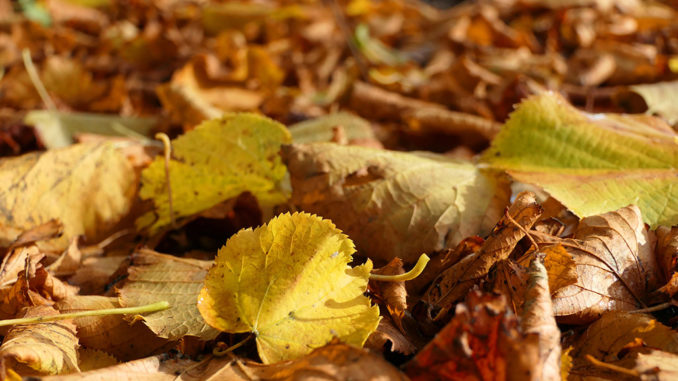
© DMG 2020
The idea of a transition between two different states is a key concept in Celtic tradition, which is why the greater sabbats mark the midpoint between the solstices and equinoxes. They are important moments of transition to look back at what has been, whilst simultaneously looking forward to what is coming.
Sunset marked the end of the day for the Celts, and so also the beginning of the next. And in the same way, the beginning of winter denoted the end of one year, and the start of the next.
So, I’d like to be the first to wish you all a Happy New Year.
Samhain
When I were a lad, I called Halloween ‘Halloween’. This isn’t really a shocking admission. But in later years I have been referring to it as Samhain, which is the original festival that Halloween has its roots in, before it was rebranded and renamed. The reason I have moved back to Samhain is simple: what a growing number of people today think of as ‘Halloween’, bears no resemblance to what Halloween was when I was growing up. And I have no doubt that what I experienced bore little resemblance to Samhain of a hundred years before.
The etymology of Samhain is from two Gaelic words. sam, meaning summer, and fuin, meaning end. Pronunciation can vary in different dialects, but if you go with either sow-in (first bit rhyming with cow) or sow-een (second bit rhyming with green) you won’t go far wrong.
To me, memories of Halloween is about wandering round with a turnip lantern, visiting people’s houses, and being invited in where a song or joke was expected. I used to perform magic tricks. Then, a reward of an apple, some home-baking or something similar would be received, and you would be on your way. Older kids who had outgrown this ritual would go around making mischief, such as knocking bins over, letting down car tyres or lifting gates off their hinges. Although my family never did it, I was aware that some reserved an extra place at the dinner table. All of this is a million miles from the tat-tastic plastic festival that Halloween has morphed into.
At its most basic, Samhain marks the end of the year. It is a time for reflection and preparing for the onset of winter. It marks the end of the third and final harvest, so apples are particularly plentiful and prominent in much of the symbolism for this season.
Farmers would slaughter any livestock which they deemed unlikely to survive the winter and land would be cleared of debris to prepare the ground for the following spring. All the rubbish and debris would be piled up and burned, with these bonfires becoming an important symbol of letting go of the past year. In the past four centuries, bonfires at this time of year have become associated with the gunpowder plot and Guido Fawkes, but this is a case of two distinct motivations being conflated. Following the King’s narrow brush with death, the people were encouraged to light bonfires. Something of an easy ask to be honest, considering bonfires were being lit up and down the country at this time of year regardless.
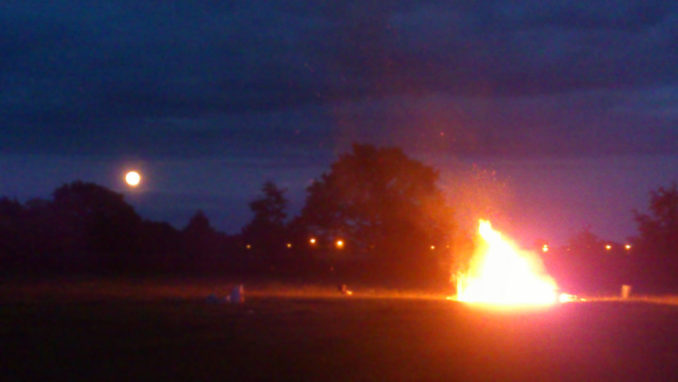
© DMG 2020
With the change in the seasons and weather—with cold, damp misty days and evenings—it is easy to see why ancients believed it was a time when our world and that of the spirit world touched, and spirits could pass into our realm. With the death of the year, people’s minds turned to lost loved ones, and ancestors were remembered.
It was said that for a few days the spirits of deceased relatives might lose their way and be able revisit their old places of abode or be drawn to family and loved ones. If this happened, they needed some hospitality before being allowed to go on their way when they were ready. Hence why extra table settings were laid. Knocking door to door, contributing something to the household and then being given food is a way for children to mimic and connect with what their ancestors might be doing. Perhaps this ritual started as a way to prepare the living for their own afterlife, so they knew what to do if they accidentally returned to the land of the living. I doubt we’ll ever know. But I will absolutely rule out commercialism.
Where I was from this was called ‘guising’, from the word ‘disguise’. A simple outfit to give you some anonymity was required in order to pass yourself off as a lost spirit, rather than ‘Billy from down the street’. It isn’t too much of a stretch to think that lonely old folk who are reminiscing might have found comfort in letting themselves believe that the shuffling figure on their doorstep is a dear departed one, and to take pleasure from the feeling that they’ve aided them in the afterlife. One thing is certain though: it was a positive encounter, otherwise guisers wouldn’t have been invited into the heart of stranger’s homes. A far cry from today, where communities of retired folk go into hiding to avoid hordes of grasping terrors who roam the streets on Halloween.
Also important when guising was that you had to contribute a few words (possibly representing arcane knowledge or insight from the spirit realm) to the household, and so a joke, a song or a riddle or something similar was expected.
I like to gently remind modern ‘Trick or Treaters’ of this. When they knock on our door, I’ll ask: “Have you got a joke or a song then?” The parents, standing behind, invariably smile and knowingly nod as their kids are completely stumped. They expect to just knock on the door and demand sweeties and money, so naturally, any kid who does come up with something Halloween-related to say gets extra sweeties as a reward. Whenever I take my kids out guising, they are always armed with a joke and a magic trick, and it’s obvious when this is appreciated by the elderly folk who answer the door.
I heard years ago from a venerable old soul (who tried teaching me to speak Gaelic when I was a child) that the older kids and their pranks was a way of scaring the younger kiddies (who were locked safely indoors) that evil spirits were also abound. And once these young kiddies had grown up, they were let in on the secret, and took on the mantle of ‘pretend evil ghosts’ to scare the new younger ones. And so it went on, generation to generation, no doubt guided by adults with their own epic tales of mischief from years ago. I can’t help but see the similarities here with the M. Night Shyamalan film The Village.
The other essential aspect of guising was a lantern, or to give it it’s proper name a Jack O’Lantern. Kids today are missing out terribly on the aroma of Halloween, or ‘burning turnip’ as we called it back then. Honestly, an LED tealight in a pumpkin just isn’t the same. I also remember the joy and frustration of trying to drip molten wax into the turnip to stick the candle in so that it would remain upright. And shielding it from the wind to avoid having to relight it for the umpteenth time. Lost skills.
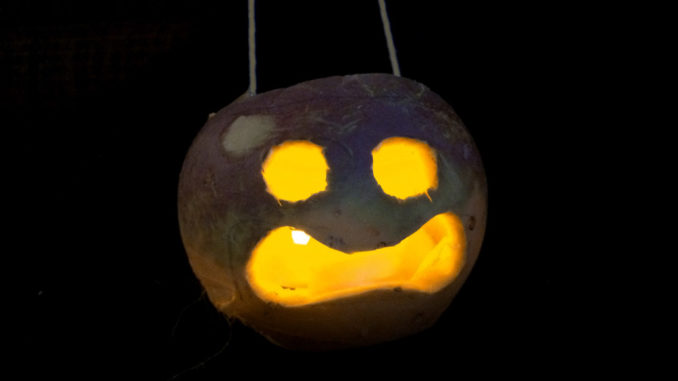
© DMG 2020
Lanterns seem to originate from the tale of ‘Stingy Jack’, which brings to mind Father Jack Hackett from Craggy Island, on account of Stingy Jack being a miserable old drunk. As the tale goes, he liked playing tricks on people, and one Halloween, he crossed paths with the Devil. Jack offered his soul in exchange for one last drink, so the devil transformed himself into a coin to pay for the drink. Jack promptly slipped this coin into his pocket next to a crucifix, thus preventing the Devil from changing back. Jack only released the Devil after he agreed not to claim Jack’s soul for another decade.
Ten years later, the Devil came to collect, Jack asked if the Devil would allow him to have one last treat – an apple from a nearby tree. When the Devil climbed the tree to fetch Jack his apple, Jack carved crucifixes around the trunk of the tree to prevent him from climbing back down, again trapping the devil. Jack only released him after a further promise not to take Jack’s soul when he finally died.
After many more years being a tight-fisted old drunk, Jack passed away and found he was refused entry to Heaven on account of his appalling behaviour. He next found himself down at the gates of Hell, but the Devil—probably rather smugly—kept his promise, and also refused Jack entry, consigning Jack to a destiny of wandering in the darkness between Heaven and Hell. His favourite food was turnip, and he usually carried one with him, so it was hollowed out, and into it the Devil placed a burning ember from the fires of Hell to light his way.
So you can forget your lazy, easy-to-carve pumpkin nonsense. They’re meant to be turnips. And they’re lanterns, not decorations. Halloween was taken across the pond by Irish Catholics, where naturally the descendants of the settlers have completely missed the point. Over there, the Mexican ‘Day of the Dead’ or the ‘Festival of the Dead’ is much closer aligned with the original Samhain.
Even on these isles, Samhain will have evolved differently in different regions. But this is what Samhain means to me, and as a Mandalorian would say: “This is the way”. So if you’ve ever felt like modern Halloween doesn’t feel like it belongs in your history, then perhaps you should reflect on the old ways and see if there is something there which resonates.
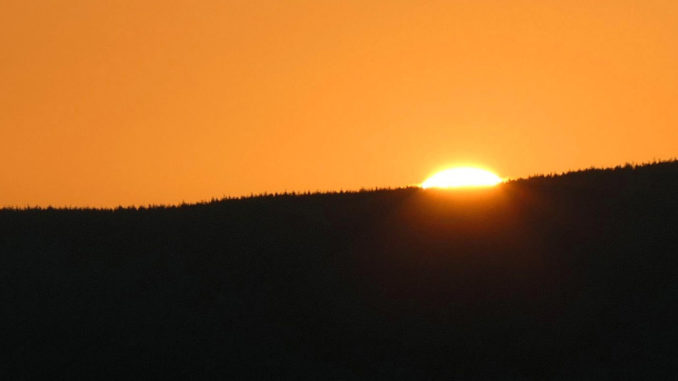
© DMG 2020
Well, it’s time for us all to prepare for hibernation. We should have worked hard through the summer and autumn so that we can survive the darkness like an embryo in a womb. This year, thanks to our government, Summer and Autumn have been particularly challenging, and the darkness is going to feel much more oppressive and terrifying than most years. We will get through it, so wrap yourself up cosy and keep your loved ones close, because it’s barely more than a month and a half until Yule!
© Carvetii 2020
The Goodnight Vienna Audio file



